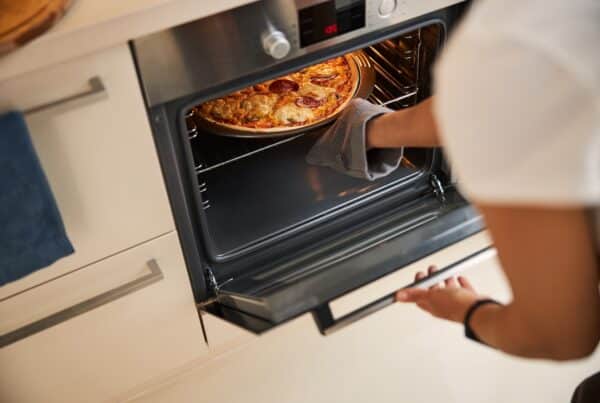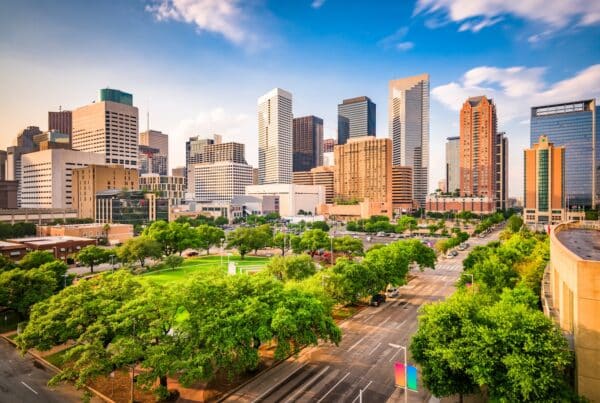
Fire safety is a critical aspect of home and building maintenance that should never be overlooked. While many people are familiar with smoke alarms and fire extinguishers, another essential component of fire safety often goes unnoticed – fire blocking.
Whether you’re a homeowner, renter, or building manager, understanding what fire blocking is and how it works can help make sure you’re as prepared as possible.
What is Fire Blocking?
Blocking is a passive protection method that involves installing fire-resistant materials in strategic locations within a building’s structure. These materials slow down or prevent the spread of fire and smoke. The aim is to keep it from moving between different building areas, such as between rooms, floors, or wall cavities.
The materials are typically non-combustible or fire-resistant substances like:
- Mineral wool: A dense, fibrous material made from molten glass, stone, or slag that is highly resistant to fire.
- Fiberglass: A common insulation that can also be a fire-blocking material due to its resistant properties.
- Fire-resistant foam: Specialized foam products that expand when exposed to heat, creating a barrier to fire and smoke.
Where is it?
You can find these materials in several places throughout a home, including (but not always limited to):
- Walls: Between wall studs and at the top and bottom of wall cavities.
- Floors: In the gaps between floor joists and around penetrations like pipes or ducts.
- Ceilings: Fire blocking is installed in the space between the top of the walls and the ceiling. Also around light fixtures and other ceiling penetrations.

Foam blocking material
How Fire Blocking Works
The primary goal of fire blocking is to compartmentalize a fire, preventing it from rapidly spreading throughout a building.
When a fire starts, it releases heat, flames, and smoke that can quickly travel through small gaps and openings. These gaps, often hidden behind drywall or other finishes, can act as pathways for fire to spread rapidly. This, of course, can cause extensive damage and make it more difficult for occupants to evacuate safely.
Fire-blocking materials work by filling these gaps and creating a barrier that slows down the fire’s progress. When exposed to heat, these materials do not ignite easily. Some may even expand to create an even more robust barrier. By slowing the spread of fire and smoke, fire blocking provides several key benefits:
- Additional evacuation time: Occupants have more time to escape the building safely before the fire spreads too far.
- Increased firefighter response time: Firefighters have more time to arrive on the scene and extinguish the flames before the fire grows out of control.
- Minimized property damage: By containing the fire in a smaller area, fire blocking can help limit the extent of damage to the building and its contents.
Fire Blocking Installation
Proper installation is crucial for ensuring the effectiveness of this fire safety measure. This should be in all common areas where fire and smoke can potentially spread, such as:
- Framing gaps: The spaces between wall studs, floor joists, and roof rafters should have fire-blocking material to prevent fire from traveling through these voids.
- Penetrations: Any openings in walls, floors, or ceilings created by pipes, ducts, wires, or other utilities should also have fire-resistant materials.
To ensure that fire blocking complies with all relevant building codes and regulations, it’s essential to work with a professional contractor who has experience with fire safety measures.

An example of fire blocking in progress while building a structure.
When to Call a Professional
There are several situations where it’s essential to call a professional for fire-blocking installation or inspection:
- New construction or renovations: If you’re building a new home or commercial building, or if you’re undergoing significant renovations, it’s important to include fire blocking in your plans and get expert input.
- Aging buildings: If you own an older building, it’s a good idea to have a professional assess your fire-blocking needs. They can make any necessary updates or repairs to bring your building up to current safety standards.
- Suspected damage or inadequacy: If you suspect that your existing fire blocking may be inadequate, call a professional for an inspection and assessment.
Remember, this is a critical component of your building’s overall fire safety strategy! Don’t leave it to chance.
Other Recommended Fire Safety Maintenance
In addition to installing and maintaining proper blocking, several other safety maintenance tasks should be habitual to ensure the safety of your home or building:
- Regular inspections: Have a professional conduct annual inspections of your building’s fire safety systems. This includes blocking, smoke alarms, extinguishers, and sprinkler systems, to ensure that everything is in good working order.
- Smoke alarms and carbon monoxide detectors: Install smoke alarms and carbon monoxide detectors on every level of your home or building. Have them professionally tested and maintained regularly.
- Fire escape plan: Work with a professional to develop a fire escape plan for your building. Then conduct regular fire drills to ensure everyone knows what to do in the event of an emergency.
- Fire extinguishers: Have fire extinguishers in high-risk areas, such as kitchens and mechanical rooms, and ensure that building occupants are able to use them correctly.
Conclusion
Fire blocking is crucial for home safety, limiting fire and smoke spread, protecting property, and saving lives. Homeowners and building managers should understand its importance and incorporate it into their fire protection strategies.
If you have questions or concerns about your home’s safety or want to schedule a comprehensive inspection, call All Coast Home Inspections in Houston, TX, and surrounding areas.



